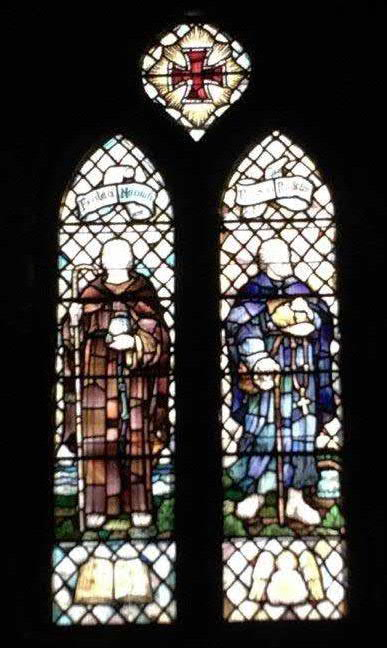This is the final post on the St Fillan’s stained glass windows, this week is the Pilgrim & St Fillan Window. More information is available here.

St Fillan was an Irish monk who came to Scotland in 717. There are three relics associated with St Fillan.
1. The Crozier (or crosier), the staff of office surmounted by a silver crook, which represents the pastoral authority of a bishop, symbolising their role as the shepherd of their ‘flock’. There is also a case or Coigreach, both are preserved in the Museum of Scotland – more. The crosier is used in our logo and is the name of our magazine.
2. The bell is also preserved in the Museum of Scotland – more.
3. The arm of St Fillan. His left arm gave off enough light so that Fillan could read the Bible after dark, and even transcribe it with his right hand by the light of his left. This has been lost.
The Mayne was an arm bone, now lost, enclosed in a silver reliquary or casket. The success of the Scots at Bannockburn was attributed to the presence of the arm of Saint Fillan, which was borne by its custodian, the Abbot of Inchaffray, on the field of battle. Legend has it that King Robert the Bruce requested the bone be brought to the Bannockburn battle site. The deoir, hereditary keeper of the relic, and the Abbot of Inchaffray Abbey left the bone behind and brought only the reliquary because they didn’t want the relic to fall into English possession. On the eve of the Bannockburn battle, as the deoir, the abbot and Robert knelt in prayer, a noise came from the reliquary. They looked at the reliquary as the door opened and the bone fell to the floor. The Bruce won the battle the next day and he established a monastery to thank St. Fillan for the victory.
The Crozier and bell are both shown on the window.